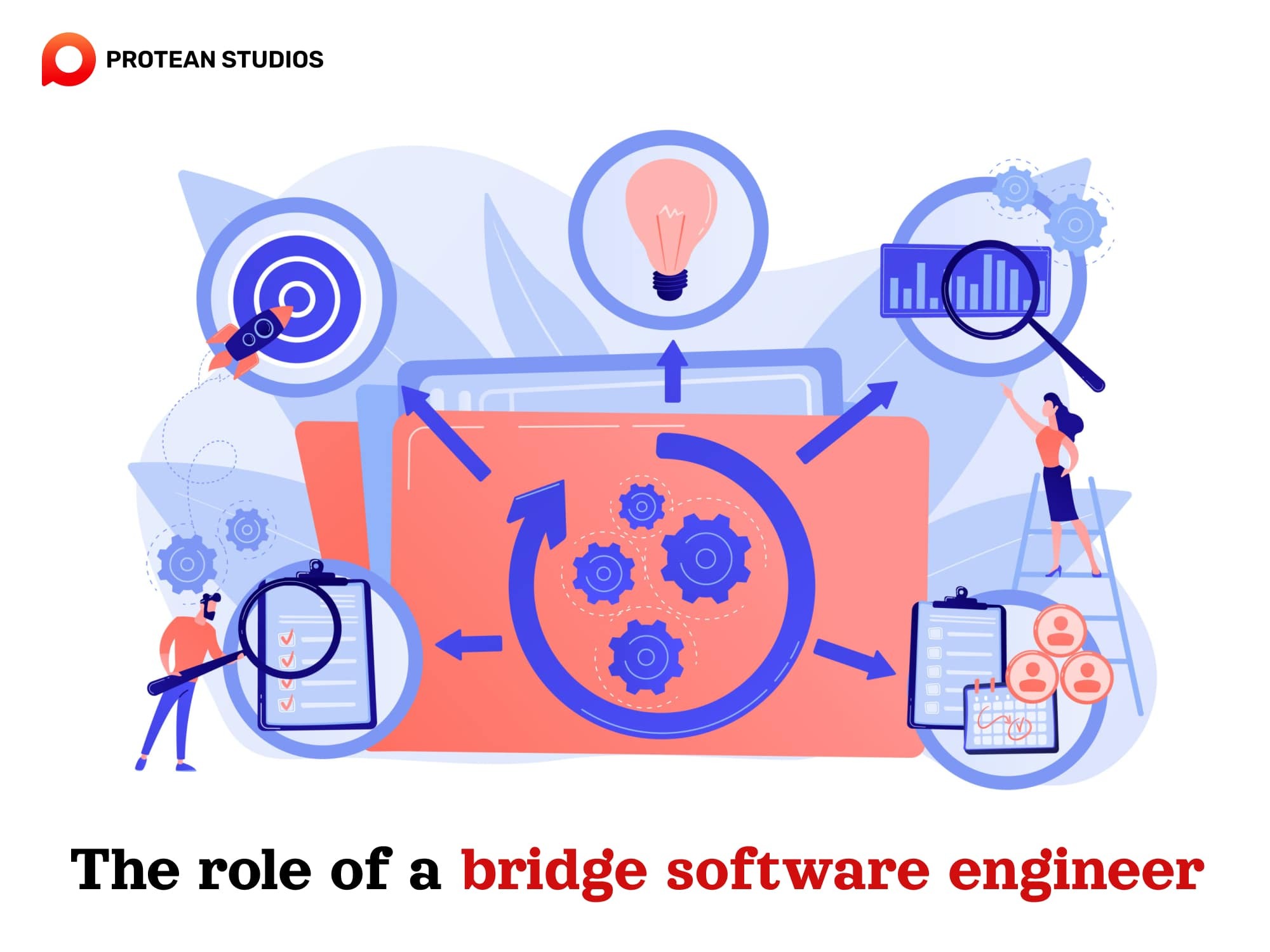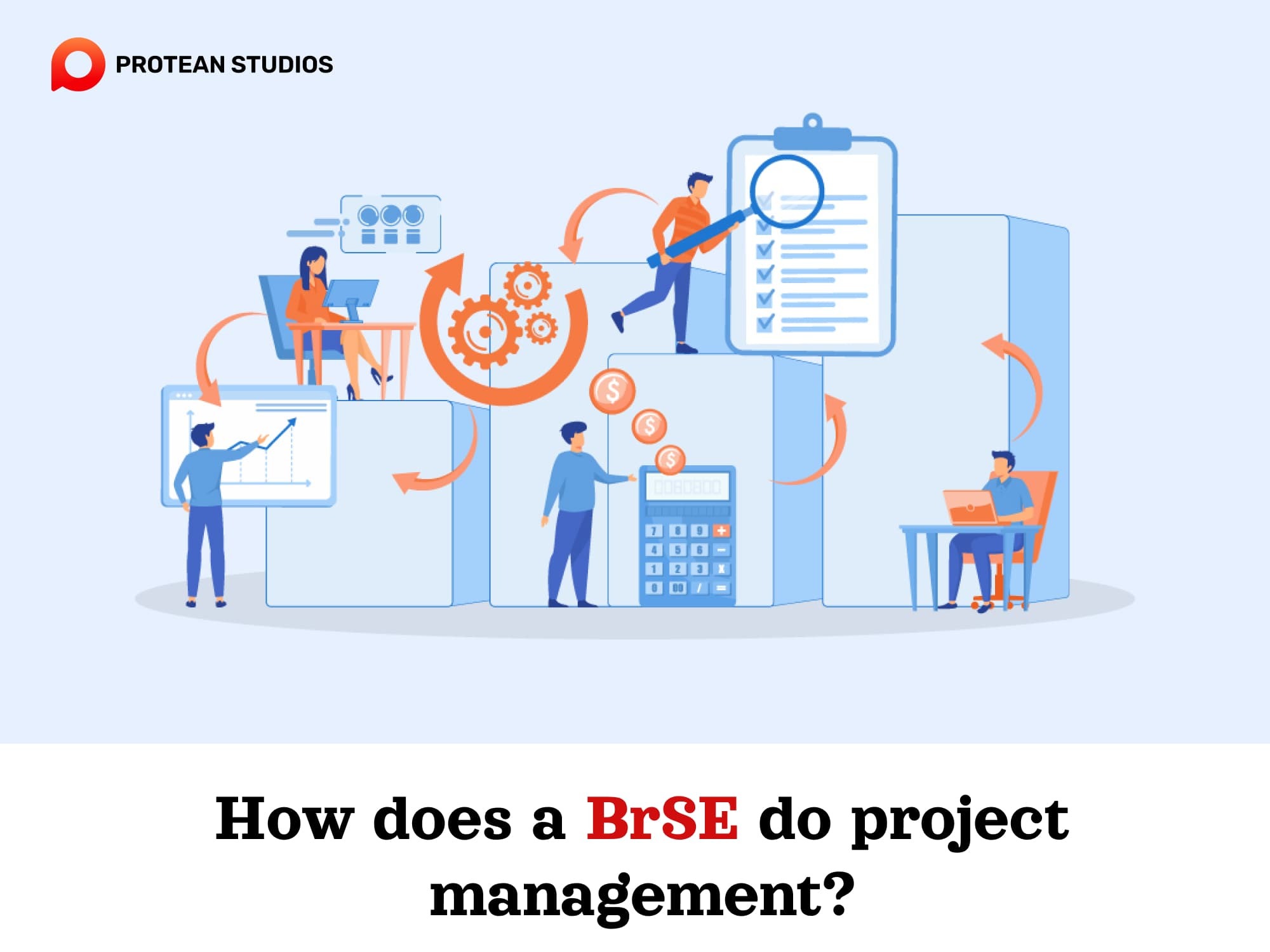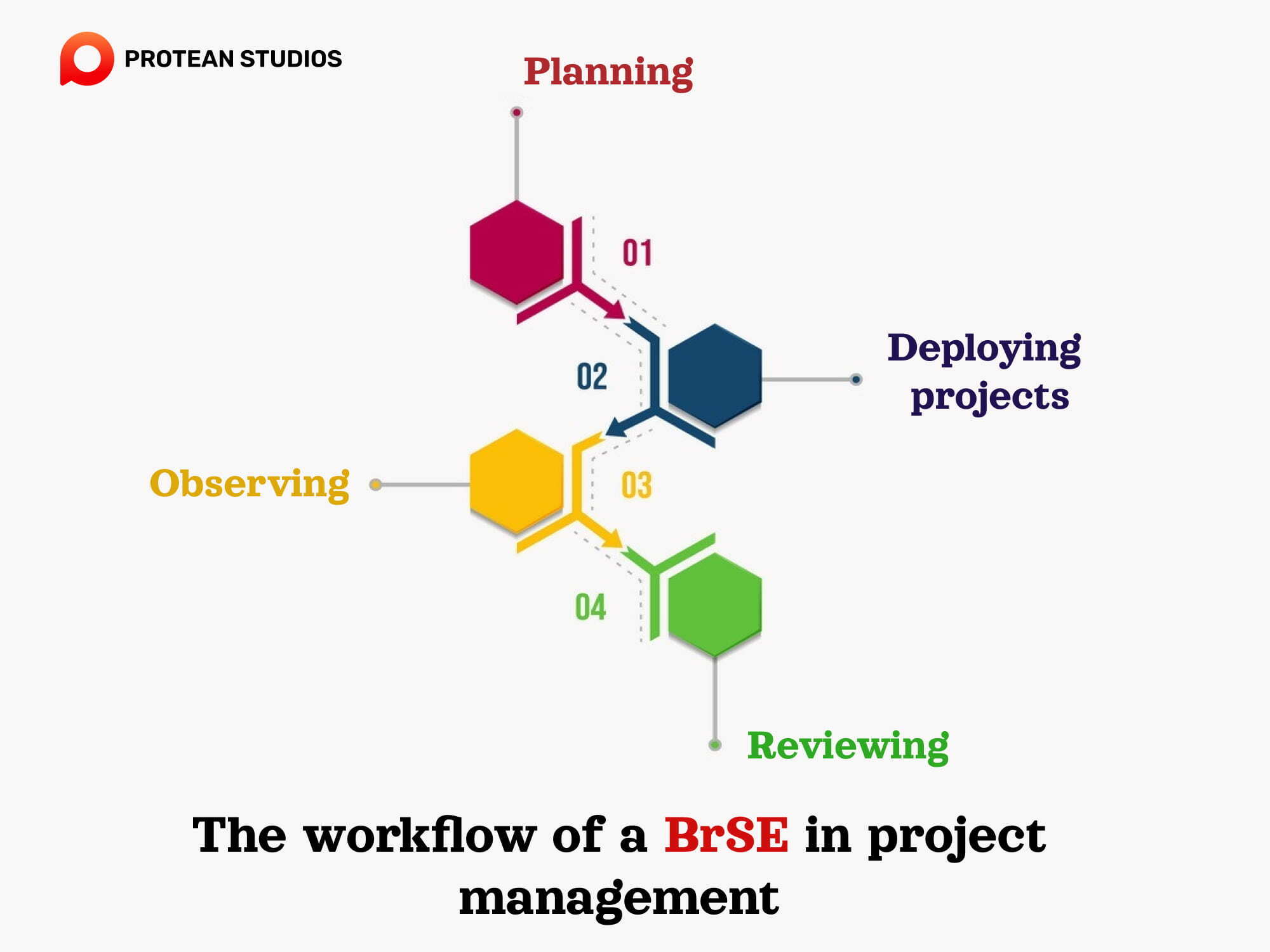A BrSE, or bridge software engineer, is a special position that connects onshore teams and other offshore software development countries. They act as bridges, ensuring communication and collaboration between teams to drive project success.
This guide delves into the four key steps that form the foundation of a BrSE's workflow, from the initial planning stage to the final deployment stage. Then, highlight some of the challenges and best practices that a BrSE faces in their daily work.
General about BrSE
A bridge software engineer, or BrSE, is a person who connects to clients and the development team. They play an important role in ensuring understanding and transparency of project requirements for success and bringing the highest quality to the software development process.
1. The role of a BrSE
BrSE serves as a crucial link between the client's vision and the developer's execution. They ensure that the final product meets both technical requirements and client expectations with technical and non-technical roles as follows:.
Technical responsibilities
Requirements Gathering: meeting with clients to understand their needs and translating their business requirements into technical specifications for developers.
Technical Design: Participating in system design, ensuring the chosen technical approach suits client needs and project goals.
Code Review and Testing: Reviewing code for quality and compliance with technical specifications; identifying and software testing to report bugs or issues.
Quality control: BrSE handles product quality control, ensuring that products meet established requirements and standards.
Non-technical responsibilities
Project Management: Assisting project managers in planning, scheduling, and monitoring project progress.
Communication and Collaboration: Enhance communication between clients and developers. They need to resolve linguistic and cultural differences.
Client Relationship Management: Building and maintaining positive relationships with clients. Meet expectations and address concerns.
Technical Support: Providing technical support to both clients and developers during development and deployment.

2. The importance of BrSE in software projects
Bridge software engineers play a vital role in ensuring the smooth and successful execution of software projects. They can bridge the gap between clients and developers, combined with their technical expertise and communication skills. Besides, BrSE also provides many benefits for software projects, such as.
Reducing costs and risks by leveraging the expertise and resources of different regions.
Enhancing quality and efficiency when applying best practices and standards from different domains.
Fostering collaboration and knowledge sharing among diverse teams helps them increase creation and innovation.
Improving customer satisfaction and loyalty by delivering software products that meet or exceed their needs and preferences.
Learn more: Bridge Software Engineers and Their Role in Offshore Projects
How does a BrSE do project management?
A BrSE handles project management tasks such as planning, scheduling, budgeting, monitoring, reporting, and communicating with clients and stakeholders. They join in project planning meetings, helping to define project scope, milestones, and timelines. Then, work with project managers to create detailed task lists and assign tasks to developers.

They also perform technical tasks such as demand analysis, design, testing, and troubleshooting. When problems or issues arise during development, BrSEs work with developers to identify the root cause and provide solutions. Thus, a BrSE needs to have both business and technical skills, as well as intercultural and language skills, to ensure the quality and success of the project.
The workflow of a BrSE in project management
The workflow of a BrSE in project management consists of four main steps below.
1. Planning
BrSE will meet with clients and stakeholders to understand their needs and expectations for the project. Then, they convert client requirements into clear, technical specifications for development teams.
Besides, they also collaborate with developers to estimate the time and resources required for each project task. Now, Bridge software engineers will develop a detailed project plan that outlines the timeline, milestones, and deliverables.
2. Deploying projects
With a solid plan in place, the BrSE shifts its focus to project deployment. This stage involves assigning tasks and resources to team members based on their skills and expertise. They provide technical support to developers, assist with troubleshooting any challenges, and check progress against the baseline plan.

Throughout the development process, the BrSE acts as a facilitator of communication, ensuring that all stakeholders remain informed and aligned. This includes managing project changes in a controlled manner and coordinating with QA teams to test the developed system before deployment.
3. Observing
Once the project is live, the BrSE's work doesn't end. They continue to play a crucial role by monitoring system performance and tracking key performance indicators (KPIs). This data helps them identify areas for improvement and ensure the system is meeting its intended objectives.
The BrSE also gathers feedback from clients and users to understand their experience and identify any potential pain points. This feedback is invaluable for shaping future project iterations and ensuring continuous improvement. Additionally, they will keep an eye out for new requirements based on usage data and user feedback, helping to stay ahead of the curve and expect future needs.
4. Reviewing
The BrSE conducts a post-project review with the client and the development team to assess the results and outcomes of the project. They identify the strengths and weaknesses of the project, as well as the lessons learned and best practices. Finally, they will provide recommendations and ideas for future improvements and enhancements.
Summarize about BrSE
The BrSE (Bridge Software Engineer) plays a pivotal role in software development and communicates between clients, developers, and stakeholders. With their workflow, BrSEs ensure the smooth flow and the success of software projects.
------------------------------------------------------------------------------------------------------------------------------------------------------
Protean Studios is a reliable IT outsourcing company with an experienced BrSE team. Our BrSEs act as a crucial bridge that can help your business and your development team achieve seamless communication and project success.
Here's how PROS' BrSEs can help you.
Bridge the communication gap: Our BrSEs have deep technical knowledge and strong communication skills, allowing them to translate your business requirements into clear technical specifications for developers.
Reduce development time and costs: By acting as a mediator and resolving issues, we can help streamline the development process, saving you valuable time and resources.
Ensure high-quality results: Our BrSEs have a proven track record of delivering successful projects that meet your specific needs and expectations.
Free up your internal resources: By outsourcing your BrSE needs to PROS, you can free up your internal team to focus on other core business functions.
We are confident that you will see the value of partnering with Protean Studios for your BrSE needs. Contact us today to learn more and get further information!




